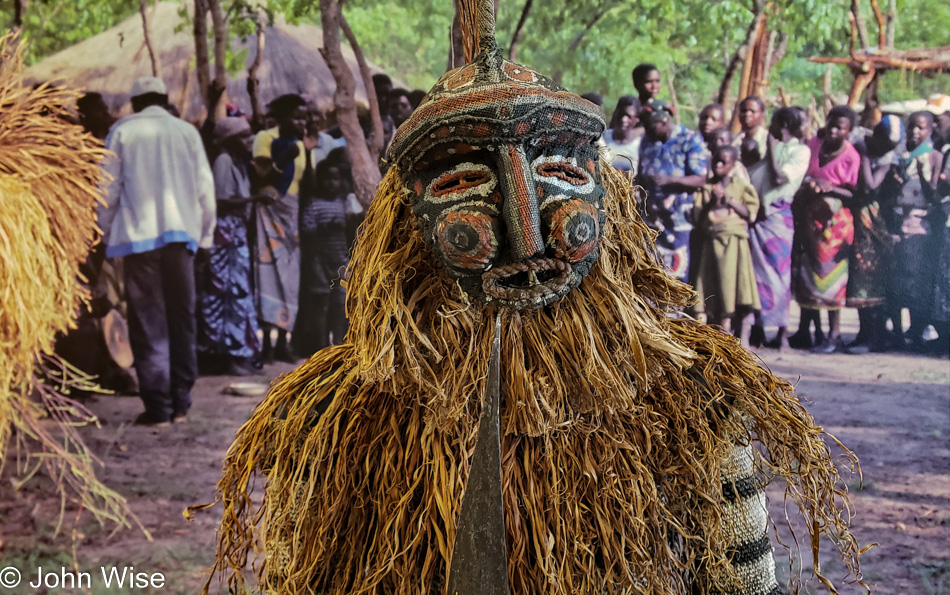
Last year, we had hoped to visit the Musical Instrument Museum a few miles from home to take in an exhibit that traveled to the US across history from more than 8,700 miles away. The MIM, as it’s known, was featuring masks and some of the musical instruments that are used by the people of the Congo in Africa. The exhibit was supposed to end many months ago, but due to the pandemic, it was extended well into 2021.
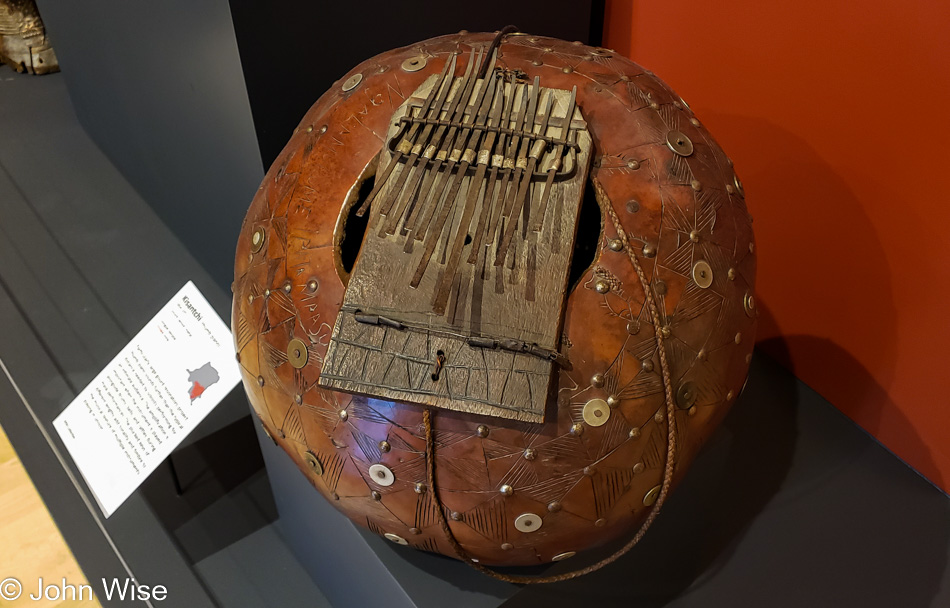
As a matter of fact, we were supposed to head out of town this weekend, but Facebook caught my eye with a post from the MIM featuring the face of an old friend I used to work with over 20 years ago. His name is Frank Thompson, but more about him in a minute. We’ve been in the rest of the museum enough times that I didn’t really need to spend our morning in the main exhibit and wanted to linger checking out these artifacts from the Congo. You might recognize part of the instrument above as a finger piano, also known as a Kalimba which is from the Mbira family of instruments originating out of Zimbabwe. This particular piece is called a Kisantchi and was used by the Songye people; it’s made of a thin piece of wood as the foundation for the plucking element, while the gourd acts as a resonator.
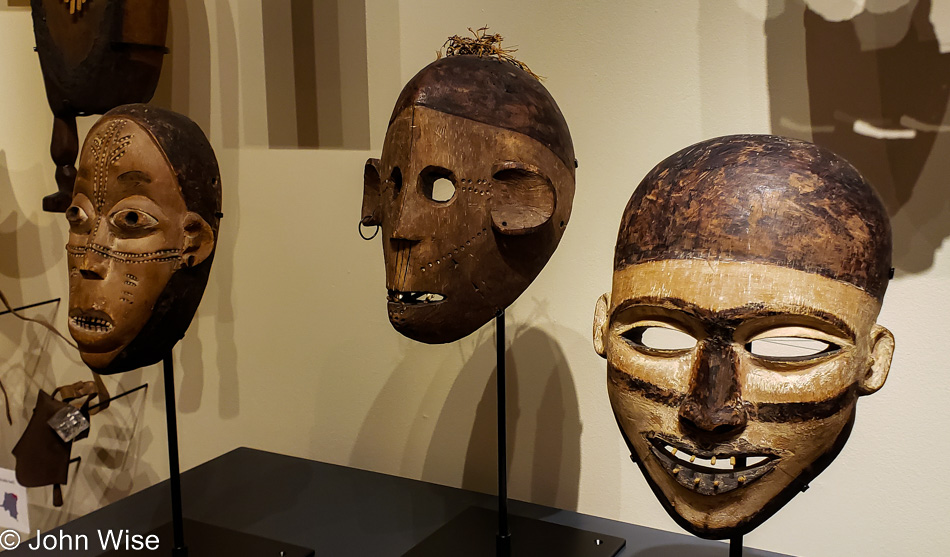
These are some of the memories I’ve chosen to travel with me towards that day when I will have experienced my last moments as a human being in this form. Should I be so lucky, Caroline and I might one day, 20 years from now, go through some of these blog posts and have the chance to celebrate how fortunate we were to have witnessed these pieces of art with our own eyes, and so I continue to blog and share.
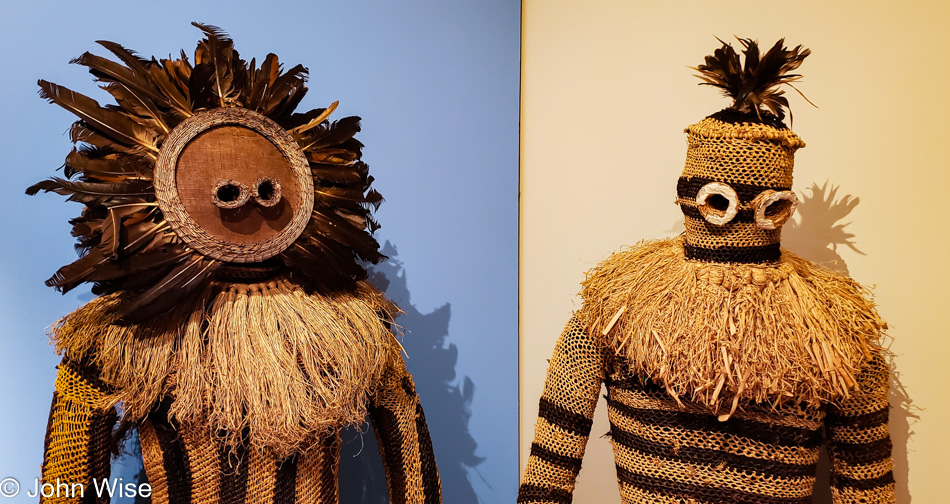
Short of being able to afford the time and money to visit the Congo for ourselves and arrive just as any particular celebration would be happening for us to see these types of costumes used in their native environment, this is the next best thing.
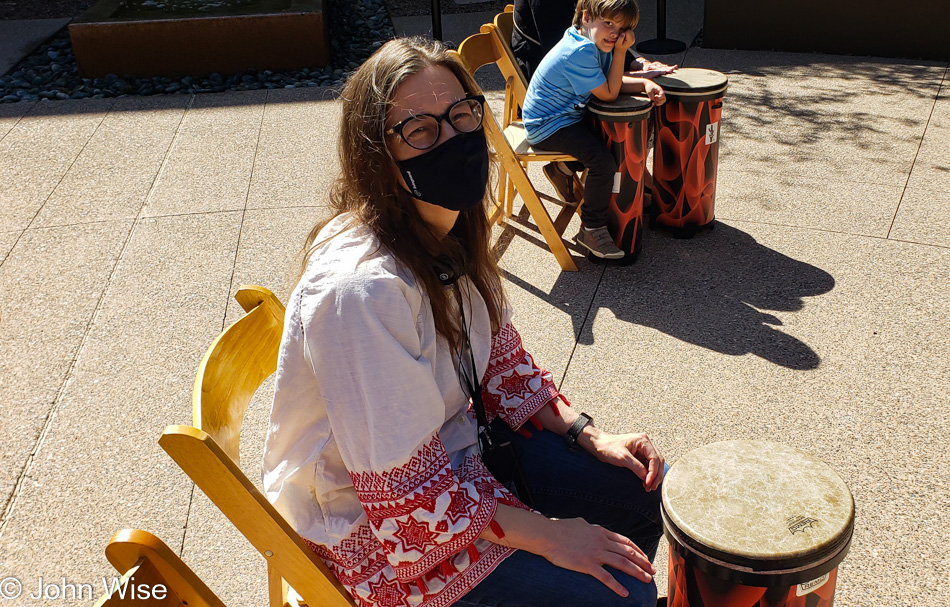
Let’s get back to Frank Thompson and his project AZ Rhythm Connection. Frank’s here today leading a socially distanced drumming session, and the idea of a group activity after our year mostly isolated had us coming to the MIM and skipping out on a weekend trip that would have taken us up near Sedona or down to Douglas, Arizona. Seeing Frank on a glorious sunny day and having him guide us through some drumming patterns was heartwarming. Caroline and I each had a drum supplied by Frank, as did the other 20 of us for the 11:30 session.
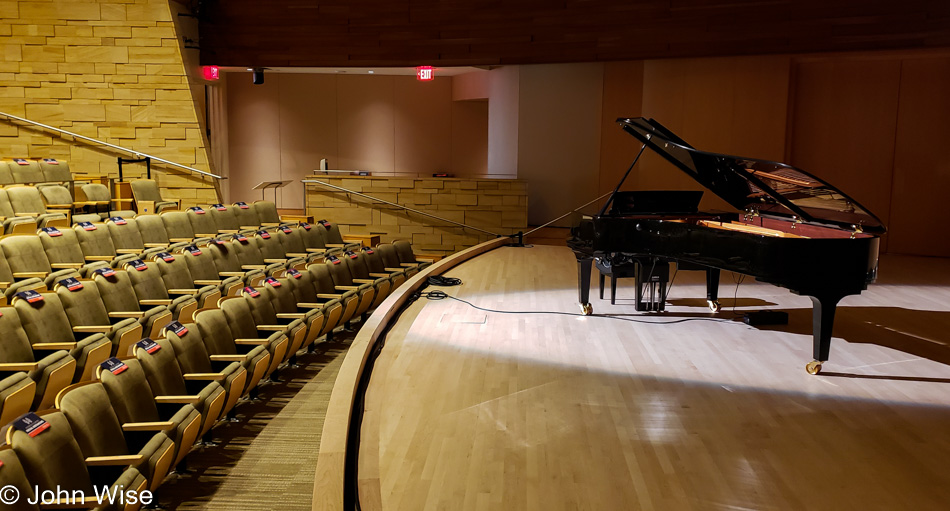
Everything to this point was perfect. While Caroline visited the gift shop, I dipped into the concert hall in which we have seen approximately 70 acts over the years since the MIM opened. This was the first time in a year of isolation that my emotions of loss hit so hard. I took seat number 10 in the fourth row, where we’ve sat on many occasions, and felt the solitude of a place that should be vibrating with life. While the player piano bleated out some crap renditions of pop standards to a weak accompanying track, I thought about the occasions we’d talked with fellow music enthusiasts seated around us. The spotlight illuminated emptiness that wasn’t to be filled with the gongs of some Gamelan music, the cello of Interpreti Veneziani, or the modern classical sounds of Kronos Quartet. We’ve experienced Dick Dale here, had our first encounter with the throat singing of Huun-Huur-Tu, and enjoyed the Ukrainian folk music group DakhaBrakha, and the Tuareg musicians from the Sahara Desert region of northern Mali known as Tinariwen.
Today, a bit of life is being had at the Musical Instrument Museum, but what it really shared with us today is how empty the void is. Like the masks in the exhibit, there is nobody behind them, and here in the museum, the general public is largely missing. The music echoes out of the past and might tease our memories, but the vibrancy of those who bring us into the ecstasy of rhythmic celebration is sadly not to be experienced right now. And while this has been true for the entirety of the past year, this was our first occasion to confront this reality with our own senses.